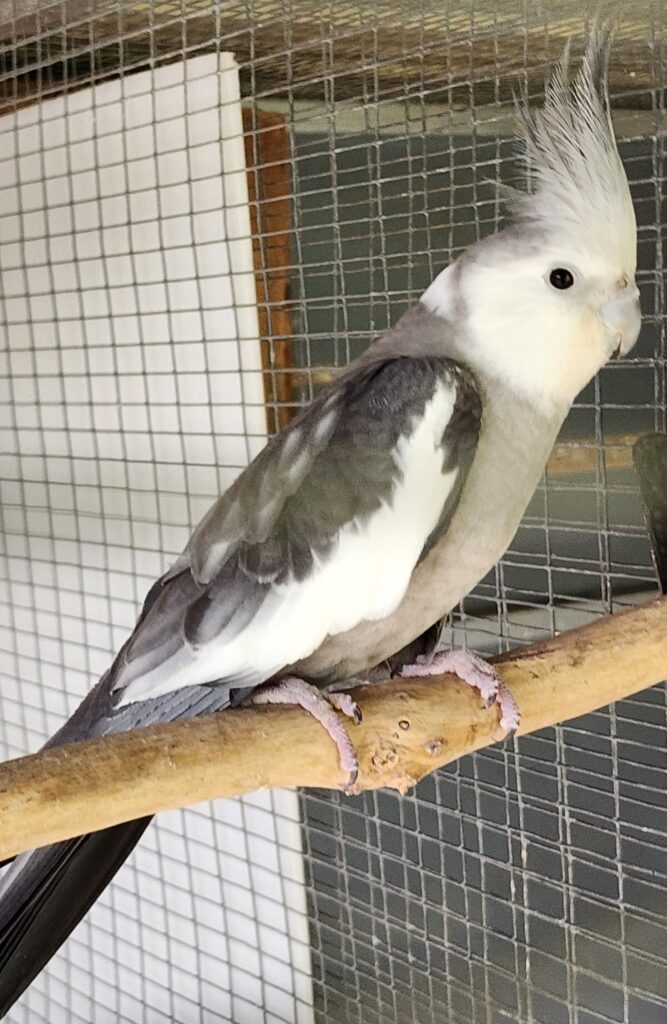Pearl
Sex-linked Mutation

The Pearl Cockatiels gene does not have any visual affect on the colour pigments in the bird but instead it affects the distribution of the colours that are already present. It actually decreases the spread of the grey family of pigments (melanin) and increases the spread of the yellow pigments (psittacins). Individual feathers over most of a pearled bird will have more of the yellow family of pigments visible giving them a scalloped pattern.
On young chicks in the nest it is not possible to detect a visual pearl until the pin feathers emerge. The pins will appear to be striped or spotty. The eye colour and down colour of the chick will remain the same as it would be in a non-pearled bird of the same colour.
Juvenile Pearl Cockatiels look identical in both sexes. The spread of the yellow family pigments gives the hens extra yellow colouring to the face making her look more male-like. However male pearl cockatiels are said to lose their pearls on maturity. This isn’t in effect the total truth. What happens is that the males pearls get covered, either fully or partially, by the melanin pigment which increases in cock birds at maturity. The pearl effect remains but is less visible. In heavy pearled cock birds the pearls may only be partially hidden and the end result is almost a shadowy effect left where some of the pearling is still partially evident. In the picture to the right this male was very heavily pearled as a juvenile and as a result some of the pearling has remained evident on his back and wings as a light grey marble effect.


There appear to be several different variations to the pearl gene. Some pearl patterns are very large and scalloped while others are just thin lines evident around the edges of the feather. Others have very sharp distinct edges between the dark and light colours whilst others seem to almost fade into each other. Regardless of the exact pattern of the pearl though it cannot be argued that it does indeed give a very attractive appearance to an otherwise full coloured bird. It combines beautifully with any of the colour mutations and is said to even enhance the feather structure of solid coloured birds. I am not completely sure of the truth of this statement but I do know that all my pearl or split pearl birds seem to have much thicker crests than my other mutations.
As most people know in humans, each person basically contains pairs of chromosomes that hold all the information that make us what we look like. To determine the sex of a human child each baby has a pair of chromosomes that are either XX (female) or XY (male). In birds this is the opposite way around so it is the female that has the XY combination and thus it is her that determines what sex each chick will be. So basically it gets down to the point that the cock bird carries two ‘X’ chromosomes while the hen has only one.
The pearl gene is one that is carried on the sex chromosome or X. The Y that the hen contains as her second one is too short to carry any wild-type genes that would suppress or oppose those carried on the X. Thus if the X chromosome contains the pearl gene in a hen, she will be a visual pearl bird because she has no gene on her Y chromosome to dominate over the pearl. In a cock bird though because he has two ‘X’ chromosomes if he has only a pearl gene on one of them then he will have a wild-type or normal gene on the other that would prohibit the pearl from being visible. If he had a pearl gene on both X’s then there is nothing to prohibit it from being visible and the bird would thus be pearl.


Reach Out To Us
Interested in adding a new feathered family member or learning more? Reach out to us by clicking on the button below.